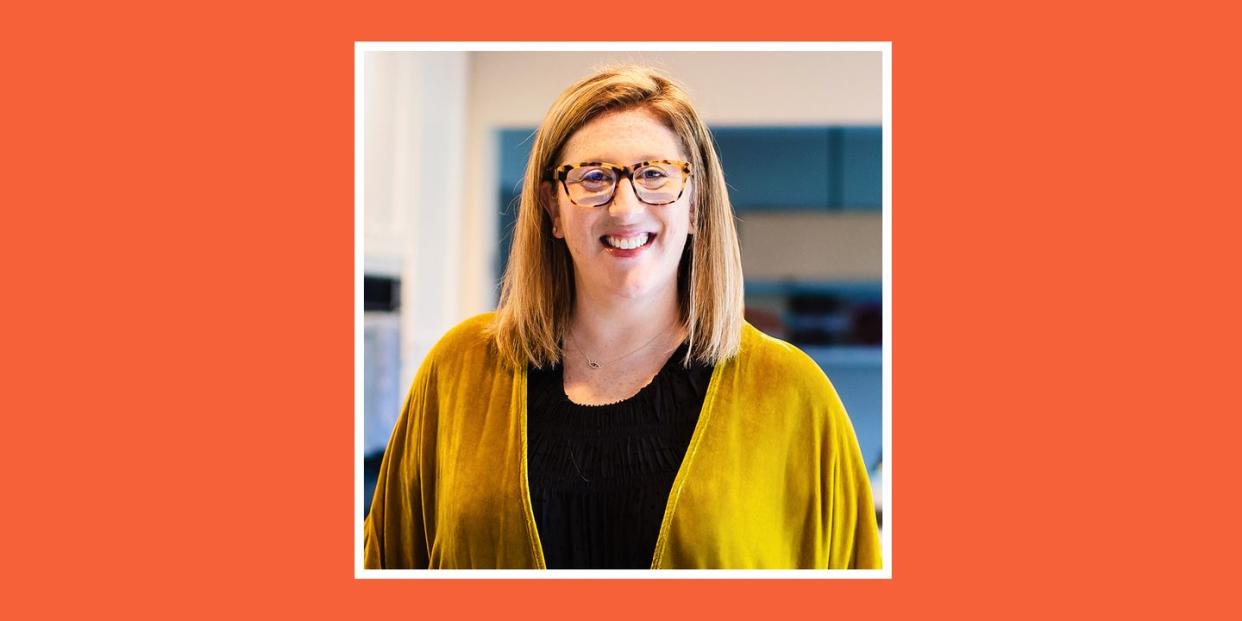This Social Worker Combines Therapy With Cooking Lessons And It Sounds Amazing

Excited to combine her passion for cooking with her career, social worker Julie Ohana founded a practice centered on culinary art therapy. Now she’s making the kitchen a place for revelations and rejuvenation.…
I fondly remember perching in front of the oven, eagerly waiting for my mom and grandma’s delicious meals to make an appearance. As I got older, I discovered how powerful these experiences were—the moments we shared over homemade dishes.
In graduate school, I wrote my master’s thesis on the therapeutic value of cooking. When I got my social work degree, I started to explore how I could combine those nurturing times with mindfulness, which led to the creation of my culinary art therapy practice in Michigan.
As a therapist of this nature, I use cooking to work with people on skills like building confidence and regulating anxiety. When I onboard clients, I have them fill out a traditional intake form, where I learn about their history and what brings them to me. We also talk about the foods they like to eat, their cooking experiences, and any dietary allergies.
Then, each session starts the same way. We make a recipe together, based on the client’s culinary competence and what they’re craving. What happens next really depends on the person and what they want to work on. Some come to me for weekly sessions; others prefer a one-time experience, either solo or with family. We cover a range of topics, from relationship difficulties to depression management.
Each session always has an aha moment.
Some people want to whip up quick dips, and others are excited to dive into bread baking. And while the intention is to cook through the full recipe, it’s not our end goal. This creative practice, like art or music therapy, focuses on the intention of mindfulness. It’s not about the destination (or the finished dish), it’s about the steps we take to get there.
I am a huge proponent of talk therapy, yet I’ve found that when sessions enter the kitchen, things move at a faster pace. Chopping onions, simmering sauces, tasting what they’ve made…people reach personal epiphanies faster. Cooking offers immediate satisfaction as you work your way through a recipe.
I’ve seen people come to instant realizations about frustrations, patterns, and behaviors when therapy meets, say, stirring a pot of soup. That’s what it’s all about for me. These moments of recognition can take much longer in traditional forms of therapy.
I just love that the kitchen provides a chance for people to recognize opportunities for change in their lives. My hope is that it continues to offer moments of mindfulness for my clients, just as it always has for me.
Stop, chop, and breathe.
You don’t need to prepare a six-course meal to be more mindful at your counter station. Just make it a point to spend, say, 20 minutes (undistracted!) chopping fresh vegetables to make a salad. While you’re at it, pay attention to the process. Truly. Pause your notifications. Turn off the TV. Meal prepping, when you’re present, is an absolutely incredible, powerful experience, says Ohana.
Hungry for more?
Sign up for a session with Julie at culinaryarttherapy.com—she offers virtual appointments!
This article originally appeared in the November 2022 issue of Women's Health
You Might Also Like

